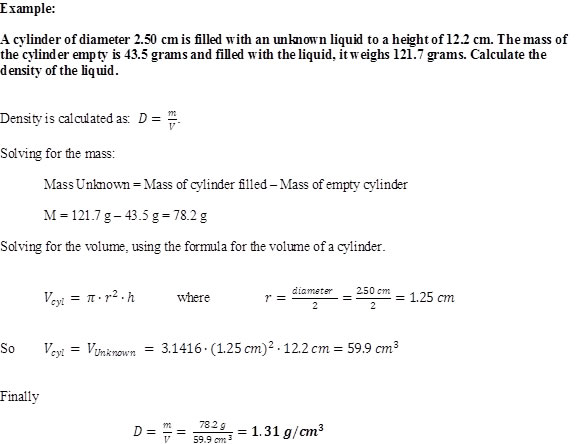
| DrJez Home Page |
| Chemistry for Engineers |
| Teaching Schedule |
| E-mail Contact |
|
Homework and Problem Solving Organization It occurs to me after close to 3 decades of teaching and grousing about the organization and neatness of homework and quiz work that for most students, organizational techniques need to be learned just as technical information does. As such, I’ve gathered a set of observations made over many years. Please read the references given below. Likely, your own work won’t include all these anomalies; however, I expect everyone will find at least one or two of these common problems in their own work.
These errors will be met with decreasing acceptance as the semester moves on. I remind you that you are graded not only on your technical and conceptual knowledge and skills, but also on your presentation quality, grammar and spelling. I believe that this is in accordance with standards befitting a university of higher education. In extreme cases, the work will not be accepted at all and resubmission will not be allowed.
Please take these comments as an impetus to improve the overall quality of your work. In addition to developing good habits, a well written document not only results in a better score, but should also prove valuable when studying for exams and quizzes. Ultimately, your value as a working professional will be higher and you will also find that you are thinking in a more organized fashion, which will enhance your problem solving skills.
1.) Overall, the work should have an easy to read, organized look. It should not be hard to read (HR) or have a poor presentation (PP). Don’t try to fit too much information into a small area. It is better to get another sheet of paper than to receive a poor score. Try to have a clean, professional look.
2.) If you insist on using a pen, you should not scratch out mistakes. (SO) Acceptable is a single line strike through such as
3.) If you use lined paper, which is a good idea, use the lines correctly. Guide your work within the lines. Do not write in margins. (MA)
4.) Attempt to be consistent in your handwriting. (HW) Make all letters the same size and shape and structure. For example, don’t write in script in one area and print in another. If your script handwriting is poor, I suggest carefully printing. Take your time. Make your writing legible.
5.) If you are answering questions, be certain that you use good sentence structure and grammar. Avoid incomplete sentences (IS), poor grammar (GR) and always use correct capitalization and punctuation (CP). Try not to write sentence fragments (SF). Don’t give incomplete answers (IA) and always explain your reasoning.
6.) Strive to be meticulous with regard to the details of work, particularly with respect to calculations. Include units (UN) and appropriate significant digits (SD). Include appropriate written notations that indicate what is being calculated or what operation is being carried out. For example, you might note that a substitution is going to be made or that an expression is going to be solved for a particular variable. Also, be sure to make the work flow in a logical pattern in the proper order (CN). For example, if you need to convert the units of a value, carry out the conversion prior to the calculations in which it is needed. Present your final answer conspicuously and complete with appropriate significant digits and units.
7.) Keep in mind that writing equations is just like writing phrases and paragraphs. They should flow logically with all appropriate symbols and expressions just like commas and periods (EF). Also, be aware that explanations often need to be included in order to explain the strategy to solve a particular problem. For example, one might want to explain that that a substitution is going to be made or that an equation is going to be solved for a given variable. Always show equations first with the variables and constants and then with substituted numbers. Lacking explanation (LE) is like writing half of a sentence. Do not assume that the approach you are taking is obvious. Write so that anyone, familiar with the problem or not would be able to pick up and understand your work. Keep in mind that you are being graded only on what you show, not what you know!
8.) Watch out for illogical equalities. (IE) A simple example may go like this:
2 x 3 = 6 x 2 = 12 + 3 = 15 - 5 = 10.
Note that all the elements in this equation are not equal as is stated.
9.) The paper you submit doesn’t need to be on thesis bond paper, but it should not be of poor quality and should not have water stains, tears, frays from spiral notebooks, etc. (PQ). Also, if you have multiple sheets, try to have them stapled before you come in. DO NOT fold over the corner and tear to keep the sheets together.
Key: Paper: HR = Hard to read PQ = Poor paper quality - Usually due to frays, tears, wet spots, etc. MA = Writing in margins PP = Poor look and presentation. SO = Unnecessary scratch outs SW = Unnecessary scratch work SP = Too much in too little space. Grab another sheet of paper
Writing: GR = Poor grammar CP = Capitalization and Punctuation HW = Poor Handwriting IE = Illogical equality PC = Poor Communication IN = Irrelevant notations IS = Incomplete sentence IA = Incomplete answer SF = Sentence fragment
Calculations: MC = Missing calculations ME = Missing equations IW = Incomplete work or calculations LE = Lacking sufficient explanation or annotations SD = Incorrect number of significant digits. UN = Improper or incomplete units EF = Poor equation format CN = Calculations lacking logical continuity or out of order.
|
| |
